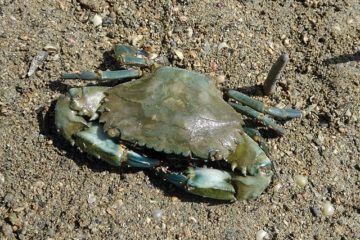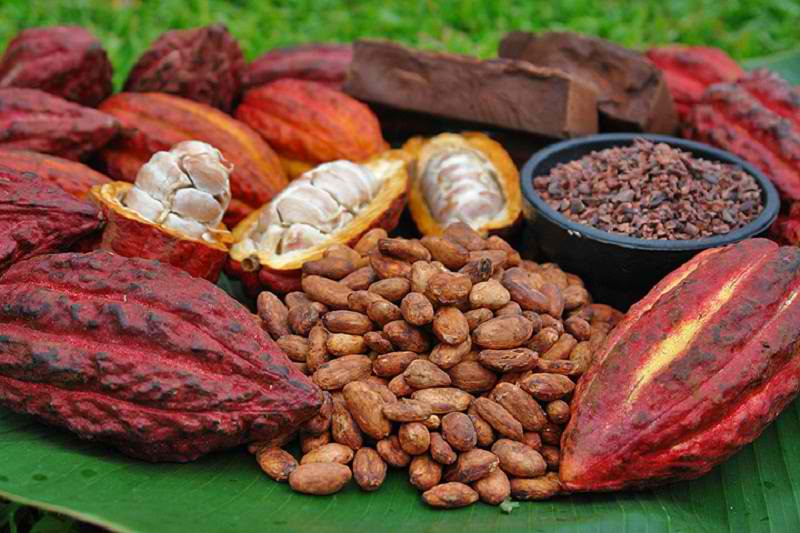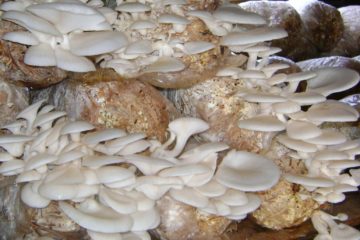CHARACTERIZATION OF ISOLATED TRICHODERMA SPP. FROM CARABAO MANURE AND DEVELOPMENT/TESTING/PROMOTION OF TRICHODERMA- BASED PRODUCTS AS ORGANIC INPUTS IN VEGETABLE PRODUCTION
Fe L. Porciuncula, Purisima P. Juico, Jonathan L. Galindez, Ellen S. Romero and Lani Lou Mar A. Lopez
Study 1: Molecular Identification and Characterization of Two Trichoderma species
Isolated from Carabao Manure and Evaluation of Shelf Life using Locally Available Substrates
Lani Lou Mar A. Lopez, Purisima P. Juico, Fe L. Porciuncula, Ellen S. Romero and Jonathan L. Galindez
Abstract
This study aimed to identify and characterize at molecular level, the two species of Trichoderma isolated from carabao manure. It also evaluated the shelf life performance and suitable substrate for the mass production of the two species.
The two Trichoderma isolates were identified as Trichoderma longibrachiatum and Trichoderma asperellum. Substrates derived from rice bran + soil, and rice bran + sawdust can be suitably used in the mass production of the species since they produced very thick and cottony mycelial density at 9 days of incubation. They also increased the production of spore during 40 days of incubation at 128 x10 7 cfu/g for T. longibrachiatum and 55×10 7 cfu/g for T. asperellum. Shelf-life of rice bran + soil as substrate last for 6 months of incubation with spore production of 129×10 7 cfu/g to 80 x10 7 cfu/g for T. longibrachiatum and 17×10 7 cfu/g to 71×10 7 cfu/g for T. asperellum.
Keywords: T. longibrachiatum, T.asperellum, molecular identification, mycelia density
Study 2: Efficiency of Isolated Trichoderma spp. from Carabao Manure as Compost
Activator and Utilization of Organic Fertilizer Produced in Pechay and Lettuce Production
Jonathan L. Galindez, Melchor P. Pascua, Lani Lou Mar A. Lopez, Fe L. Porciuncula, Ellen S. Romero and Purisima P.Juico
Abstract
Efficiency of Trichoderma as compost activator was evaluated using the following treatments: T1-rice straw (RS) + carabao manure (CM); T2–RS (75%) + ipil-ipil leaves (25%) + CM + CRH + 2 kg Trichoderma per ton of compost pile applied during piling; T3–RS (75%) + ipil-ipil leaves (25%) + CM + CRH + 2 kg Trichoderma per ton of compost pile applied during piling (1 kg) and during first turning (1 kg); T4–RS (75%) + ipil-ipil leaves (25%) + CM + CRH
- 1 kg Trichoderma applied during piling and 1 kg during first and second turning; T5-RS (75%) + ipil-ipil leaves (25%) + CM + CRH + 1 kg Trichoderma applied during piling and 1 kg during first and second turning + actinomycetes on the last turning and; T6- RS (75%) + ipil-ipil leaves (25%) + CM + commercial compost activator.
In the first experiment, compost piles applied with Trichoderma regardless of frequency of application did not differ in number of days to harvest at 74; for the control, it was 102 days. Treatment 2 had the highest recovery of 65.0%. The composite nutrient content of the compost has 34.17% organic matter; 2.67% nitrogen; 0.45% phosphorus; and 0.82% potassium.
To improve the nutrient content of the compost, another experiment was set-up with increased percentage (30%) of greens composed of ipil-ipil leaves, kakawate and banana bracts. Treatment 2 recorded the highest percent recovery (63.34%) when harvested at 69 days. Treatment 5 has the highest NPK content of 5.3% also at 69 days decomposition period.
Increasing the rate of Trichoderma was also evaluated. With split application (during piling, and first and second turning) of 6 kg Trichoderma per ton of compost pile, days to harvest was 66. Pechay and lettuce applied with organic fertilizer from T5 had significantly higher yield (9.04t/ha and 5.24 t/ha, respectively) than plants applied with commercial organic fertilizer.
Keywords: Trichoderma spp., compost activator, organic fertilizer, decomposition period, percent recovery
Study 3: Formulation and Testing of Combined Organic Liquid Supplement from
Trichoderma spp. and Fermented Plant and Seed Extracts on the Growth of Organic Pechay
Ellen S. Romero, Lani Lou Mar A. Lopez, Fe L. Porciuncula, Purisima P. Juico and Jonathan L. Galindez
Abstract
This study aimed to formulate and test the efficacy of combined organic liquid supplement (OLS) from Trichoderma spp. and fermented extracts from kakawate and malunggay leaves, banana fruits, soybean, and mungbean seeds. Based on one trial undertaken in a certified organic area at RM-CARES, yield of pechay was significantly increased by the supplementation of Trichoderma spp. in combination with fermented plant and seed extracts. Treatment with 1:0.5 ratio of T. asperellum + fermented plant and seed extracts had the highest computed yield of 12 t/ha (p<.01) which is 47% higher than the yield obtained in commercial OLS and 106% higher than the control. The treatment with 1:0.5 ratio of T. longibrachiatum + fermented plant and seed extracts, and treatment with commercial OLS produced comparable yield with 9.80 t/ha and 8.17 t/ha, respectively.
Keywords: Organic liquid supplement, Trichoderma longibrachiatum, Trichoderma asperellum, fermented extracts, bio-fertilizer, commercial OLS
Study 4: In-Vitro and In-Vivo Antagonism of Two Trichoderma spp. Species as Bio-
control for Soil-Borne Diseases of Selected Crops
Purisima P. Juico, Lani Lou Mar A. Lopez, Fe L. Porciuncula, Ellen S. Romero and Jonathan L. Galindez
Abstract
In this study, Trichoderma longibrachiatum and Trichoderma asperellum previously isolated from carabao manure were evaluated as microbial antagonist against plant fungal pathogens that cause diseases on specific crops. The two species are naturally occurring fungus with the ability to inhibit the growth of other fungal microorganisms.
The two microbial antagonists T. longibrachiatum and T. asperellum were screened against fungal pathogens isolated from pechay, Rhizopus sp.; tomato, Sclerotinia sp.; and onion, Sclerotium sp. Growth inhibition of the two Trichoderma species varied depending on the fungal pathogens. T. longribrachiatum reduced the mycelia growth of the pathogen Rhizopus sp. at 36.96 %; Sclerotinia sp., 25.16 %; and Sclerotium sp., 36.32 %. T.asperellum on the other hand, reduced the mycelia growth of Rhizopus sp. at 39.69 %; Sclerotinia sp., 38.04 %; and Sclerotium sp., 40.49 %. Both antagonists exhibited moderate inhibition on the growth of the pathogen with the percentage inhibition scale of two (Alvindia and Natsuaki, 2008). (there should be no reference citation in abstract)
The in-vivo experiment utilizing Trichoderma as soil treatment against pathogens yielded positive results for the test crops. The application of Trichoderma enhanced the seed germination of pechay at 90 %; tomato, 90.33 %; and onion, 78.33 %. Application of Trichoderma on soil with or without the presence of pathogen influenced the growth of pechay, tomato and onion with the plant height recorded at 19.97 cm, 56.45 cm and 5.38 cm, respectively. Whereas, application of both Trichoderma species either alone or in combination in soil with or without infection of disease reduced the growth of pathogen on tomato at 5 % and onion at 20 %.
Keywords: in-vitro, in-vivo, antagonism, bio-control agent, T. longibrachiatum, T. asperellum
Study 5: Information, Education and Communication (IEC) Materials Development
and Promotion of Trichoderma-based Products as Organic Inputs in Vegetable Production
Fe L. Porciuncula, Jonathan L. Galindez, Lani Lou Mar A. Lopez, Ellen S. Romero and Purisima P. Juico
Abstract
Apart from the beneficial gains of the overall project in terms of producing cheaper Trichoderma-based products and providing empirical evidences on its potential uses as decomposer, organic liquid fertilizer supplement and bio-control agent, the research intends to package the results into usable IEC materials needed in promoting its beneficial uses in organic vegetable production (pechay and lettuce).
The significant research results were translated/packaged into usable IEC materials such as guides, leaflets and posters. This was done thru a team effort of the project team, in a participatory manner with the participation of the technical expert and development communication practitioner. Review/assessment of the research results was undertaken by the project team, taking into account the technical soundness, economic viability and acceptability of the significant results that were translated into IEC materials. Eight leaflets were developed/produced, four in English entitled “Steps in Trichoderma Production”, “Guide in Organic Fertilizer Production UsingTrichoderma as Decomposer”, “Guide in Organic Lettuce Production” and Guide in Organic Pechay Production” and another four in the vernacular entitled “Hakbang sa Paggawa ng Trichoderma”, “Gabay sa Paggawa ng Organikong Pataba Gamit ang Trichoderma bilang Decomposer”, “Gabay sa Produksyon ng Organikong Letsugas” at “Gabay sa Produksyon ng Organikong Petsay”. Two posters were produced, one highlighting the benefits of usingTrichoderma as organic inputs and the other highlighting the steps in organic fertilizer production.
The leaflets and posters were used in the promotional efforts of the project through promotion during educational tours, participation in exhibits, field day and training of farmers, extension workers, students and other practitioners which created awareness and generated interest among clienteles. Four scientific papers were also generated and submitted to two refereed journals, with the end view of being published and sharing results of the research in a community of scientists, researchers and other stakeholders.
Keywords: Trichoderma IEC materials, guides, leaflets, poster, promotional efforts


